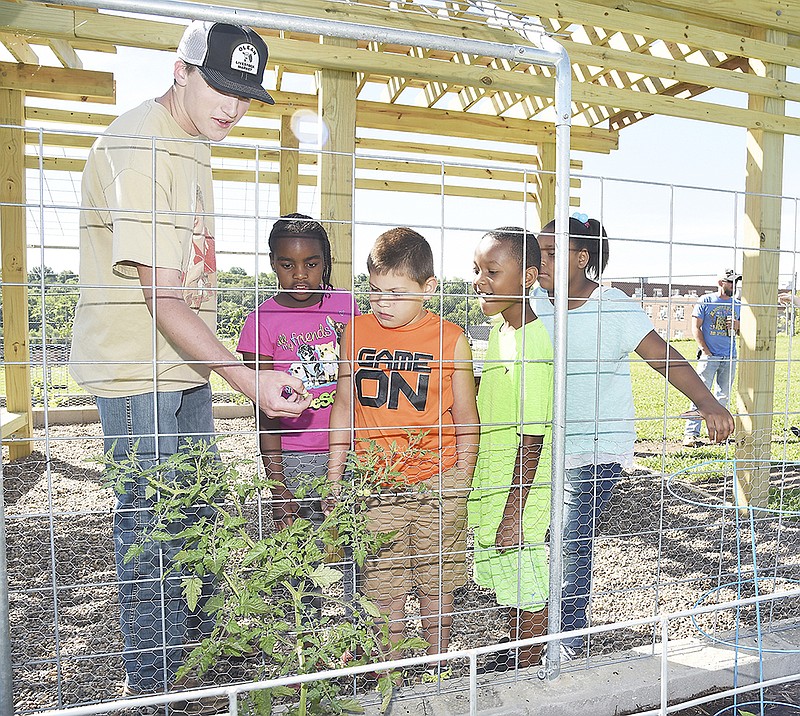With the help of a partnership between Healthy Schools, Healthy Communities and Lincoln University, Thorpe Gordon Elementary students have a new outdoor classroom to supplement their summer learning experiences.
Tara Barbour's third-grade summer school class participated in a Wednesday ribbon cutting, signifying the beginning of an outdoor learning curriculum students at all grade levels will be able to use.
"In the third grade, our students are talking about the life cycle of a plant, so it's going to be great that we are able to offer hands-on experience right here at school," Barbour said. "Just coming out here to take care of the plants, giving the students a change of scenery, will definitely help to keep them engaged."
The outdoor classroom comes to the school as a byproduct of the Healthy Schools, Healthy Communities action plan. The classroom has benches and tables with garden beds along the sides.
Nicole Stacey, student wellness coordinator at Jefferson City Public Schools, is in charge of the Healthy Schools, Healthy Communities grant from an educational aspect - helping four school sites to attain resources that touch on physical, mental, nutritional and healthy behaviors.
Thorpe Gordon, South, East and Callaway Hills elementary schools are eligible to receive Healthy Schools, Healthy Communities funds from the five-year grant distributed by the Missouri Foundation for Health.
"We're not all built to sit at a desk all day. This gives the teachers and the students at all grade levels a chance to get outside of the classroom and keep their bodies moving," Stacey said. "We want them to experience vegetables first-hand because if they actually get to plant it, they are more than likely to want to try it."
Jeff Hargrove, community resiliency specialist at Lincoln University, designed the garden in February and began building it three weeks ago. Hargrove, Stacey and Lincoln University freshman Wyatt Hunzinker helped build it.
"The main goal is to teach them where their food comes from so we can create a tangible tool to show them that it's not just putting a plant in the ground," Hargrove said.
He said the intent of the program is to teach students everything about how weather, soils and conservation practices can affect plants.
Hargrove works under a grant funded by the National Science Foundation's Experimental Program to Stimulate Competitive Research, which partners with 10 universities across the state to implement similar programs.
"The idea is for students at all grade levels and community members to better understand the connection between climate and plant," said David Heise, assistant professor of computer, science, technology and mathematics at LU. "If you can reach the children at an early age, they may go home and talk with their parents about it, sparking further conversation and plant the seeds for them to be resilient throughout their life."
Callaway Hills Elementary is the only other school site with an outdoor garden.
"For the school to have something like this available to students is a start of something great because it's not just accessible after school," Stacey said. "It keeps everyone moving and helps get the students involved in agriculture and science, which may spark something for them in the future."

